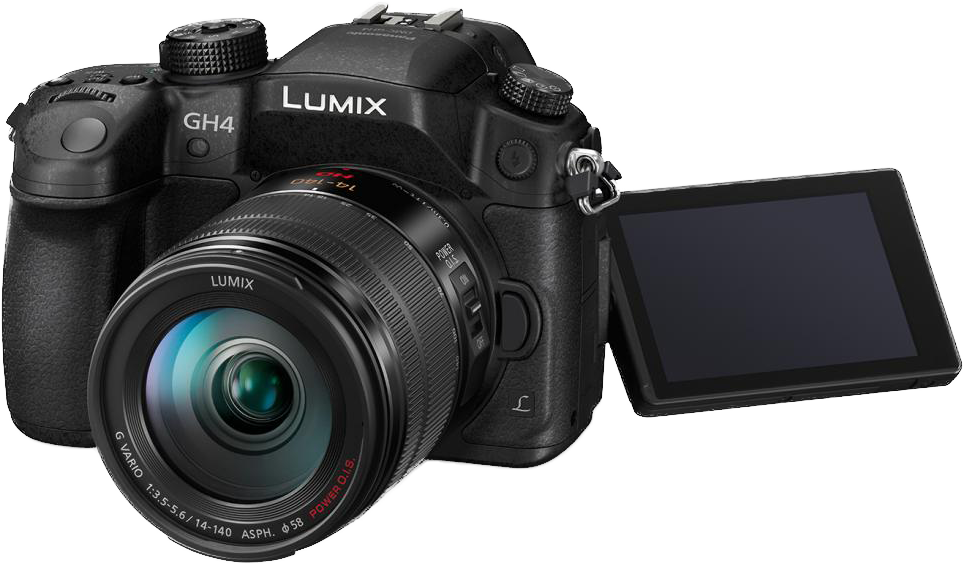I returned my GH4 and pre-ordered a Sony a7S.
It’s Not You GH4, it’s Me
After shooting very few tests with a small handful of lenses, including full-frame glass on a Metabones speedbooster, I packed up my Panasonic GH4 and sent it back to B&H. As much as I loved the controls, the form-factor, the variable frame rates and 4K sharpness, I couldn’t fall in love with the image quality.
But I came here not to bury the GH4, but to praise it. It’s a freaking awesome little camera. Here are just a few highlights:
- After years of shooting with Canon DSLRs, having an electronic viewfinder with peaking, zebras, and even functional touch-to-focus was beyond refreshing.
- I even put the little guy on my stabilizer and experimented with using autofocus. It was easy to set up an autofocus zone at a custom position and size within the frame, and the camera would quietly and smoothly focus the Vario 12–35 ƒ2.8 zoom lens on the subject, keeping up with all but the most abrupt of movements. Truly useful autofocus.
- Variable frame rates are handled in a lovely way. You do have to dig in a menu for them, but once there, you have all the funky speeds you could want, including the all-important 22. Yes, 96 fps is a bit soft. But dude. 96 fps. And you can see your slow or fast motion playing back on the sharp, highly-positionable touch LCD.
A Crushing Blow
Ultimately, what doomed the GH4 for me was (what I perceived to be) its lack of dynamic range. Even after flattening out the image with the ample picture stye controls, my GH4 footage felt like reversal, not a neg. It felt crunchier and more brittle than even the footage from my 5D Mark III.
That, combined with a noisy image that didn’t degrade well in low-light situations, made me feel like the GH4 just wasn’t quite cinematically making up for its smaller sensor. Even with a Metabones speedbooster and a fast 50, I couldn’t quite coax the sexiness out of it.
To be crystal clear: The GH4 is a great camera. It just wasn’t for me.
For real, thoughful reviews of the GH4, check out the epic, detailed review at Cameralabs and Philip Bloom’s evolving video review.
You can never get enough of what you don’t need.
It’s easy to pick a camera for a particular project. But in the ever-changing world of tiny, affordable digital cinema cameras, if you don’t have a shoot on the calendar with specific camera requirements, then no camera will seem adequate. There will always be a “next camera,” the one that gets to be perfect in your mind rather than imperfect in your hand.
For many, that camera right now is the Sony a7S. I haven’t written about this little mirrorless marvel here yet, but you’ve heard all about it, I’m sure. It’s the latest in Sony’s line of impossibly-slim full-frame mirrorless cameras. It shoots 1080p video internally at up to 60 fps, and 4K 24p to an external recorder.
But what excites me most about it is that it seems to have the most remarkable low-light capability of any camera on the market (owing, presumably, to the gigantic gapless photosites on its modestly-megapixeled, 5D-sized sensor). Yes, this is fun for the stunt of turning night into day, but in practical terms this means low noise at normal light levels. And this little deck of cards with a lens mount shoots log. Which means it wants to be graded.
I’m fully aware that I’ve caught a case of next-camera syndrome here. I’ll let you know if the a7S is the cure, or just another symptom.
The Sony a7S is $2,500 USD and available for pre-order at Amazon and B&H.
Update
on 2014-06-11 23:08 by Stu
I just ordered the newly-redesigned Metabones Canon EF to Sony NEX lens adapter so I can use my Canon lenses on the a7S.




